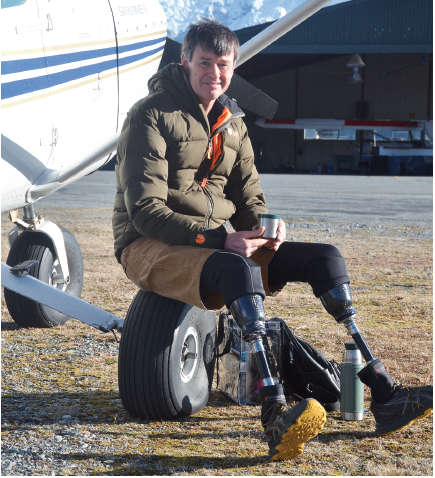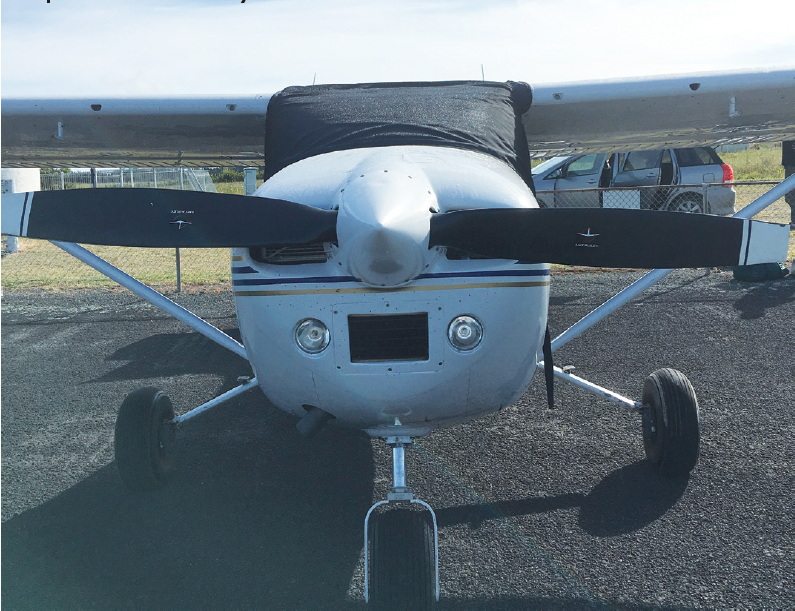By Ross Millichamp
Almost everyone starts their aviation career in the same place. We get into an aircraft with an instructor for the first time and start on the long and seemingly impossible PPL syllabus.

The training regime is very structured, follows a logical procession and generally carries the student along on the journey until completion. “Today we do medium turns, next time we do stalls. Make sure you book your next lesson at the desk before you leave.” If the instructor does not hear from you for a while, you might get a text encouraging you to get back in the air before you start to forget what you’ve learned.
Once initial training is completed our aviation paths diverge. Some people leap straight into CPL training and then into a career where motivation for flying is automatic and assured. Some people become active at their local aero club, which motivates members with competitions, fly-aways and social events. Sadly, some people who excel during training do not enjoy the unstructured environment of private aviation and drop out.
Perhaps aircraft owners are the most fortunate. We have ready access to our aircraft of choice and are free to decide where and when we fly. We also tend to fly more often than non-owners and are less likely to suffer the loss of confidence that comes from long periods on the ground. Of course, this comes at a significant financial cost, but once you’ve bought the aircraft, insured it, bought/ rented a hangar and paid for the annual maintenance, you can con yourself into thinking that the only cost of going flying is the fuel and the oil.
However, even aircraft owners struggle for motivation at times, which is why AOPA fly-ins and safaris are such a Godsend. When one of Ian Sinclair’s emails appears in our inbox, we have a reason to get the plane out of the hangar and head off somewhere new and interesting. If the event is to somewhere a bit challenging, we might just sneak out and do a little practice beforehand.
Like most pilots, I have to constantly work on ways to increase the utilisation of our aircraft. My answer is to include activities such as fishing and hunting into my flying programme. One of my most satisfying trips occurred not long after we bought our first aircraft, a 180HP Cessna 172, which turned out to be perfect for an aspiring back country pilot of modest ability. A friend was acting as the caretaker of a property on the Cascade River in South Westland and invited me over to go hunting.
I went first with an instructor for a practice run before heading back a few weeks later on my own with a rifle. To a novice, the strip appeared short, bumpy and narrow with big drains on either side. The valley itself seemed tight and the approach felt cluttered with terrain and trees. I circled the strip a couple of times before I plucked up the courage to land.
Nowadays I find the strip to be reasonably straightforward, but at the time it felt challenging. I’d grown up reading stories of the early fixed wing venison pilots who worked out of South Westland bush strips, so it was a proud moment when I wandered back through Security Gate 16 at Christchurch International Airport carrying a stag’s head!

Since then I’ve made it a rule to try to use the Cessna before resorting to road or airline travel. A few years ago I flew to the Far North to meet my brother and fish for the spring run of big snapper in Doubtless Bay. We had great success and this has now become an annual event. Some years the dodgy spring weather allows me to get there in the Cessna, while in other years I have to swallow my pride and go with Air New Zealand. One thing I’ve learned is that, if the weather is looking 50:50 a week or two out from a trip, to book a ‘flexidate’ ticket with Air New Zealand as a back-up. They are fully refundable.
On the way to and from the Far North I try to make fuel stops at an airfield I’ve not been to before. This has given me the experience of landing at Wellington, Kapiti, Wanganui, Taupo, Te Kuiti, North Shore, Kerikeri and Dargaville – places I might not have had reason to visit otherwise.
On my early trips north from Canterbury I would track east of Mt Taranaki and up the West Coast past the Manakau Harbour, because there was no controlled airspace and I could stay on 119.1 much of the time. Lately, to keep things interesting, I’ve started tracking over Ardmore and through east Auckland airspace past the Skytower, the Auckland Harbour Bridge and north via the Whangaparaoa Transit Lane. It’s certainly much busier, with multiple frequency changes, but that side of Auckland is stunning from the air.
I often hear visiting North Island pilots say they’re a little intimidated by the Southern Alps. Believe me, we South Islanders feel the same way about Auckland airspace!
Any long trip is inevitably accompanied by weather concerns along the way. New Zealand has a highly variable climate and it’s unlikely that the weather will be good on both the east and west coasts at the same time, or good in both Canterbury and the Far North. Jinny and I have had our share of unscheduled stops along the way, but over time you learn to go with the flow. As they say, ‘If you have time to spare, go by air’.
On one trip Jinny and I were forced to land at Thames when we found ourselves boxed in by weather in unfamiliar terrain. The heavens opened as soon as we landed and we were stuck. We wandered into town, found a motel, rented a car and had a couple of days exploring the Coromandel while we waited for the weather to clear. It turned out to be a great experience.

Another time we were forced to land at Raglan when afternoon thunderstorms blocked our progress north at a time when I was starting to run low on fuel and even lower on ideas. We had no trouble booking a cabin at the Top 10 Holiday Park next to the grass strip, but were told our Labrador was not welcome. We called the local vet who was kind enough to put her up for the night. We asked the vet if this was a regular occurrence. “Never happened before,” he said. Such is the fun and variety of private aviation.
I am always looking for excuses to fly. I have learned that you have to plan more trips than you might really want to do, because a percentage will end up being cancelled due to the weather. Our friends have learned that when we say we’re coming to visit, as often as not we’ll cancel at the last minute. However, when all the ducks line up, you can’t beat it.
This article first appeared in the Autumn 2021 edition of Approach Magazine, the dedicated magazine of AOPA NZ, which is published quarterly.

